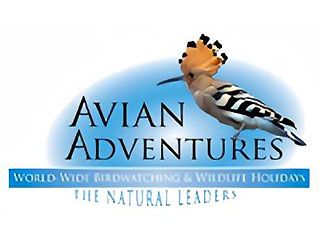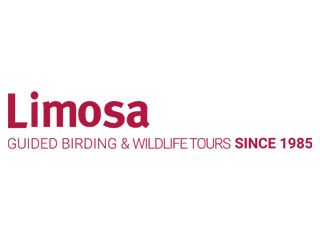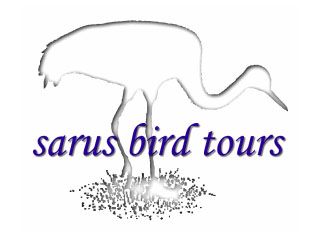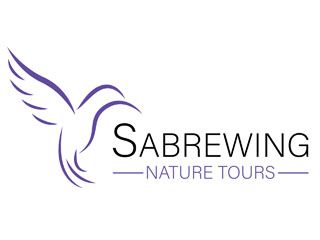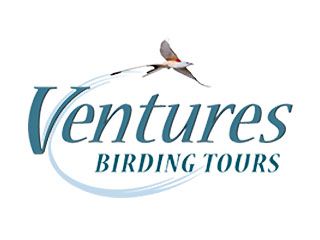Ecotours Worldwide - Stop Dreaming - Start Booking
Veracruz Migration Special
10 days or 14 days with extension
Without witnessing one of the planet's greatest natural phenomena it is hard to imagine the "Rio de Rapaces", the spectacular migration of millions of raptors at the Veracruz coastline. Though our tour is planned to coincide with the peak of autumn migration, we will have time to visit pine-oak woodlands, tropical rainforests, coastal mangroves and humid forests, which give a chance to encounter the members of the bird diversity of Veracruz with over 500 species. The abundance of migrating raptors can exceed 100 thousand or even half million per day! But numbers of migrating raptor species (20-30) will be outnumbered by New World warblers (30-50 species) and we should pay a special attention to the 25 or more local endemics as well.
Still your attention could easily be distracted from time to time by the fascinating local history and culture, which we can add for "culture-vultures" as optional programmes. Or we can even tailor our programme according to your needs to spend some time at colonial towns such as La Antigua, at the Totonacan ruins of Cempoala, or in the finest Anthropology Museum of Xalapa, famous for its collection of colossal 3000-years old Olmec heads.
Surely the above mix guarantees a really enjoyable and unforgettable "birding holiday cocktail" with us in Mexico!
Fact File
- 10 or 14 birding days with extension in Veracruz, Mexico visiting the best migration hotspots and local endemics' habitats seasoned with local culture
- start and finish in Veracruz
- using just 2 (or 4 with extension) accommodations to maximize visited habitats and possible species
Highlights
- witness the World's largest raptor migration with hundreds of thousands of birds
- huge numbers of migrating passerines and waterbirds
- New World warblers from East and West US and other songbirds rarely seen elsewhere side by side
- dozens of local endemics and many more great resident species
- great variety of hummingbirds, including endemics
- amazing variety of habitats from desert dominated by Joshua trees through prairie, wetland, coastal mangrove and scrub-thorn forests to mountain pine-oak forests and tropical rainforests
- birds and butterflies at Texolo, the most spectacular waterfall of Mexico
- birding in one of the northernmost tropical rainforests of the Americas, Sierra de Las Tuxtlas
- optional boat-trip at a mangrove or at a lake
- birding in the breathtaking Las Minas Canyon
- wide array of optionally visited cultural highlights
Accommodation
3 + 2 nights at Cardel
3 nights at Xalapa
during the extension:
3 nights at Catecamo, Sierra de Las Tuxtlas
1 night at Veracruz
Price
http://www.ecotours-worldwide.com/dates-prices
Ask for the actual price.
Our price includes:
- all travel within the country as noted in the itinerary;
- all accommodation based on shared rooms (most rooms are twin bedded), at most locations there are single rooms as well for extra charge (Please ask for a single room at the time of booking!);
- 3 meals per day, generally breakfast at the accommodation, packed lunch, dinner (consists of at least two courses);
- services of the leader(s);
- trip materials.
Not included:
- flight to and from Veracruz;
- optional programmes to places of interest and entrance fees involved;
- airport and other departure taxes, tips;
- food beyond generally 3 meals/day mentioned in the itineraries;
- excess baggage charges;
- telephone calls;
- alcoholic beverages;
- compulsory personal insurance.
- other personal expenses
If you have questions about the inclusion of any cost item, please contact us at This email address is being protected from spambots. You need JavaScript enabled to view it.
Activity level
Generally easy to moderate walks
Some areas are humid; hot temperatures and rain is possible
Itinerary
Day1
Arrival to Veracruz, short transfer to Cardel where we will be based for 3 nights. Birding en route if time permits.
Days2-3
We spend the first days in the vicinity of Cardel. At lowland forests we search for Black-headed Trogon, Rose-throated Becard, Black-headed Saltator, Aztec Parakeet, Buff-Bellied Hummingbird. At coastal mangrove lagoons and beaches we look for Black-collared Hawk, Snail Kite, Bat Falcon, Laughing Falcon, Pinnated Bittern, Boat-billed Heron, Roseate Spoonbill, Black Skimmer, Belted, Ringed, Amazon, and Green Kingfishers, plus numerous shorebirds. At grassland or prairie habitats and dry scrub-thorn bushes we expect to see Aplomado Falcon, Fork-tailed Flycatcher, Mexican Sheartail, White-bellied and Rufous-naped Wren, Double-striped Thick-knee, Lesser Yellow-headed Vulture, Common Tody-Flycatcher, Plain-breasted Ground-Dove and Varied Bunting. In desert type vegetation dominated by Joshua trees and agaves we search for Scott's Oriole, Say's Phoebe, Canyon Towhee, Rufous-crowned Sparrow, Western Scrub Jay and White-eared Hummingbird.
But each day as soon as the air warms up the main attraction will be to witness the immense migration of birds of prey, the River of Raptors. Millions of Turkey Vultures, Broad-winged and Swainson's Hawks, hundred-thousands of Mississippi Kites, thousands of Ospreys, Sharp-shinned and Cooper's Hawks and American Kestrels pass through here. Many other raptors colour the sky as well, such as Swallow-tailed and Plumbeous Kite, Northern Harrier, Zone-tailed, Red-shouldered, Red-tailed and Harris's Hawk, Merlin, Peregrine Falcon and some local species such as Grey and Roadside Hawk, Hook-billed Kite, Great and Common Black Hawk and Aplomado Falcon.
At each of the sites we will also hope for a spectacular waterbird and passerine migration, mainly Wood Storks, American White Pelicans, Anhingas, White Ibises and large flocks of Scissor-tailed Flycatchers, Red-billed Pigeons and White-winged Doves.
Days4-6
We head towards Xalapa, where we spend 3 nights visiting different habitats. We explore shaded coffee plantations, where both Olivaceous and Ivory-billed Woodcreepers are possible. We will look for Yellow-olive and Ochre-bellied Flycatcher, White-winged and Common Bush Tanager. Other colourful species include Blue-crowned Motmot and Wedge-tailed Sabrewing.
We make a short trip to a spectacular waterfall where beside the stunning scenery we should enjoy the view of White-collared Swift, Bat Falcon, Rufous-capped Warbler, Yellow-throated Euphonia and Montezuma Oropendola.
The paths on an extinct volcano are a great place to see Rusty Sparrow, Tufted Flycatcher, Fan-tailed and Golden-crowned Warbler, Berylline Hummingbird, Blue-crowned Motmot, Squirrel Cuckoo and Green Jay.
At a dramatic canyon and at mountain pine-oak forests we search for endemics such as Blue Mockingbird, Red Warbler, Brown-backed Solitaire, Grey Silky Flycatcher, Cinnamon-bellied Flowerpiercer, Striped Sparrow and Bearded Wood-Partridge among others.
Days7-8
We spend the last days of the circuit tour again in the vicinity of Cardel partly at lowland migration points, partly at different other habitats to look for the above mentioned species.
Days9-10
If you do not participate in the extension to the amazingly intact cloud forests of Las Tuxtlas then we return with you to Veracruz airport for your flight back home, where you arrive the following day.
Extension
Day9
South of Veracruz a huge coastal plain dotted with lagoons, wetlands and wet prairie is an excellent area to search for Pinnated Bittern, Limpkin and large flocks of waders. Flocks of Scissor-tailed and Fork-tailed Flycatchers and different other migrants and residents such as Yellow-bellied Elaenia are often seen in patches of woods. Later during the day Lesser Yellow-headed Vultures and Mangrove Swallows might be in the air. At the drier areas Double-striped Thick-knee can be found, where Aplomado Falcons hunt. Black-collared Hawks are occasionally seen at the wetlands, which also hold Snail Kite and Great Black-Hawk.
Later on we head further South to the Sierra de Las Tuxtlas.
Days10-11
2 full and a half day birding at the Sierra de Las Tuxtlas, where we will visit lush tropical patches of rainforest and coastal open habitats. Tuxtla Quail-Dove, a buff-throated subspecies of Black-headed Saltator and Plain-breasted or Chestnut-capped Brush-Finch are just a few examples of the birds, which can only be found in Las Tuxtlas area. Other species include Violaceous Trogon, Collared Aracari, Black-cowled Oriole, Keel-billed Toucan, Red-lored Parrot, Crimson-collared Tanager, Bright-rumped Attila, Lesser Greenlet, Stub-tailed Spadebill, Ruddy and Buff-throated Foliage-Gleaners, Lineated, Smoky-brown and Golden-Olive Woodpeckers, Ivory-billed and Barred Woodcreepers.
We have to try hard for some of the elevational migrants such as Slate-coloured Solitaire and Blue-crowned Chlorophonia. We try to find hummingbirds like the endemic Long-tailed Sabrewing, Violet Sabrewing and Black-crested Coquette and raptors such as White Hawk, Barred Forest-Falcon and Black Hawk-Eagle.
A rewarding optional programme can be a boat ride through the Laguna de Sontecomapan, where we might see Pygmy Kingfisher, Sungrebe and Bare-throated Tiger-Heron.
Day12
Depending on how we do at other places we might visit La Jungla and Nanciyaga Nature Reserve. A morning birding here not just gives a second chance to find some of the previously mentioned species, but we can always add some new ones as well such as Long-tailed and Little Hermits or White-breasted and Spot-breasted Wood-Wrens. During the afternoon we say goodbye to this fascinating area and travel back to Veracruz.
Days13-14
Finally we drive to Veracruz airport for your flight back home.
Overnight flight, arrival home.

Contact
Phone: Call May-October; Text all year
+36 30-645-9318 or +36 30-211-0006
Call Nov-April: +506 84961012 or 84961417
e-mails:
ecotoursgabororban @ gmail.com
toucanbirdingecolodge @ gmail.com
Our mission
Our first priority is to save habitats & species.
Secondly we would like to share our knowledge of wildlife and encourage you to participate directly or indirectly in protecting nature.
We are also working continuously on our carbon balance with developing our 23 hectares of wildlife reserve.




